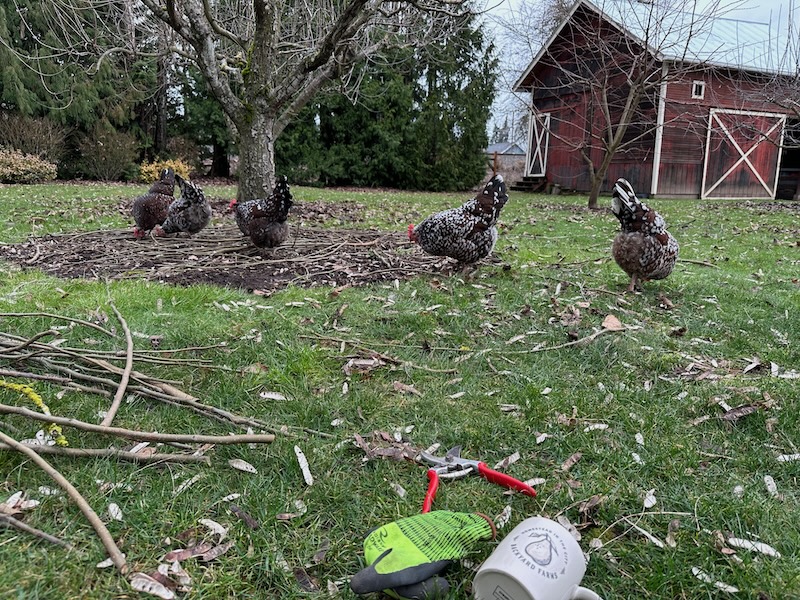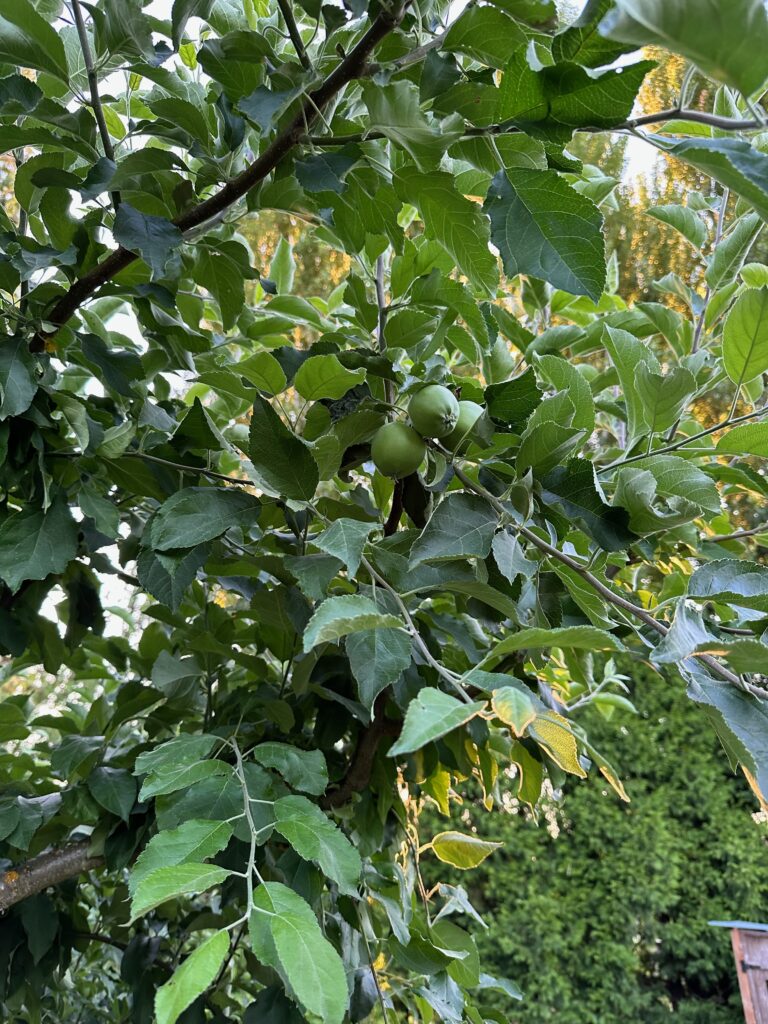We have a hobby fruit orchard on our property. The trees had already been seasonally pruned when we put an offer on the house in March 2022, and a new growth cycle was just beginning.

When Ethan and I flew down from Alaska to help my parents move into the house a couple months later, all the flower blooms had come and gone, branches were growing and green leaves covered the trees. And by the time our family arrived from Alaska with our U-Haul in tow at the beginning of July, there was fruit growing on some of the trees. Or rather, *a little bit of fruit on some of the trees. We were underwhelmed, but also ignorant about how home orchards actually work, we assumed it was an off-year for some reason and it would probably be better the next year.
This bit of magical thinking carried us to pruning season 2023. Last January I started googling: reading articles, studying pictures, watching videos. There are all varieties of “how-to” methods available for learning, of course. Thinning cuts, reduction cuts, heading cuts. Central leader, or open center……on and on and on the information flowed. Eventually, snowed in by information, but still clueless as to how to actually do the thing – my main takeaway was this: Use February 14 as your marker date to begin pruning because you love your trees. By then it was March 14 and I feared the buds would soon be forming. If we didn’t get out there soon it would be evident that we may not love our trees as much as we meant to!! David and I picked up our clippers, grabbed a ladder and went out to the trees.

As we stood studying the shapes and states of our various trees trying to figure out how the previous owner seemed to have made pruning decisions (trying to apply our understanding of all the stuff we had just tried to learn) and debating whether we wanted to make the same decisions or try to adjust course, we were well aware of the fact that we didn’t really know much of anything about pruning fruit trees. We didn’t know how our cuts would fold into the coming growth cycle and what bearing they would actually have on the bearing of fruit. So we simply started cutting based on the whims of our best judgment.

In the end, I think we did a pretty good job. I decided this because just a few weeks later, the buds on the trees were pretty.

As spring marched on, I watched the trees unfold into summer. Leaves opened, branches grew, and *in some cases, fruit even began to appear.
*In some cases being our key disappointment in the entire process.
All around us that summer, apple trees produced to excess. Take a walk or drive down any country road and you could see apple trees standing courageous and strong, bearing the burden of heavy fruit load. Our apple trees…..were not out standing among them. To be fair, we did have one tree that produced admirably well and we were grateful for the many apples we were able to pluck from its branches. An additional tree produced a more meager offering, but the other apple trees must have decided that since we hadn’t got anything from them the previous year, why start now? The plum tree produced enough plums that I needed the fingers on two hands to count them, but there was nothing at all from the cherry or pear.
And here we are now. At the end of January, heading straightaway toward the end of another dormant season. February 14 is nearly here and time to signal our love for the trees! With that in mind, I noticed last week that Al’s Garden and Home was offering a free fruit pruning workshop and I decided I would go. David joined me for the very well-attended event in Woodburn on Saturday morning — we were obviously not the only ones who wanted to know how to love the trees – aka: HOW TO GET FRUIT. It was an excellent presentation. Helpful. And still. What did I learn?
I listened carefully and watched as the arborist gave instruction and cut examples off a potted tree up front. I wrote a few notes: Prune any time. Prune according to your goals with regard to structure and competition . Prune only as much as you need to accomplish your goals. And other assorted details that barely made sense as I looked at them while standing back at home in my orchard with clippers in hand.
However, there was one note in particular which I understood at my very core:
Go ahead, make the cut! And be fascinated with the process.
I felt immediate resonance as the arborist spoke these words and underscored them with a wide smile. I wrote them down word for word. I know this one! I thought to myself.
In her poem “Sometimes” which can be found in her collection Red Bird, Mary Oliver’s famous, and oft quoted lines go like this:
Instructions for living a life:
Pay attention.
Be astonished.
Tell about it.
Standing out in the orchard with a cup of coffee and clippers on Sunday afternoon, I went ahead and made the first cut.





 2023 Reading Review
2023 Reading Review